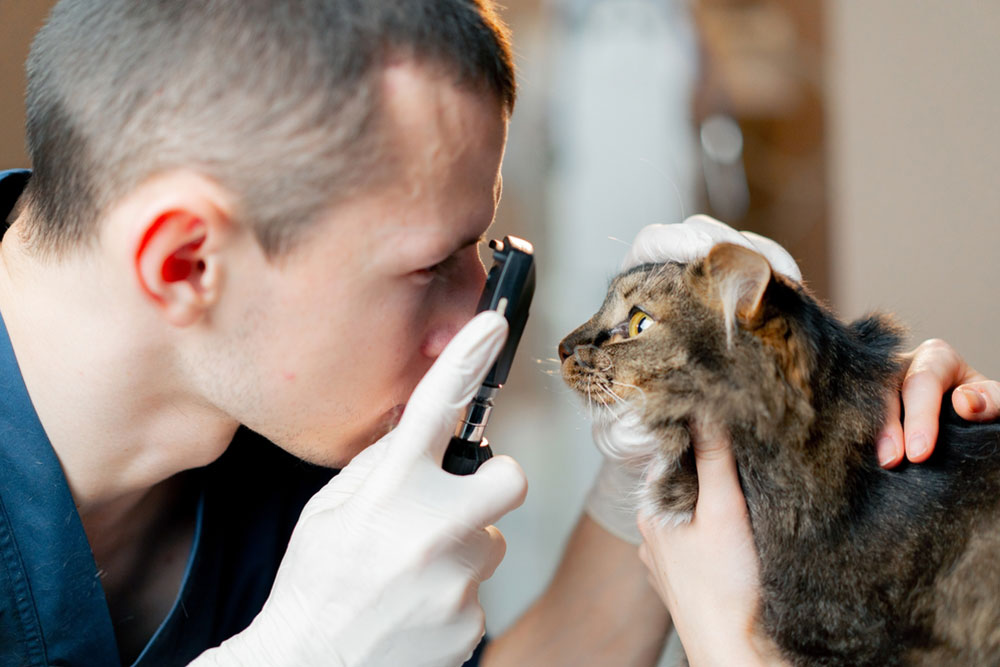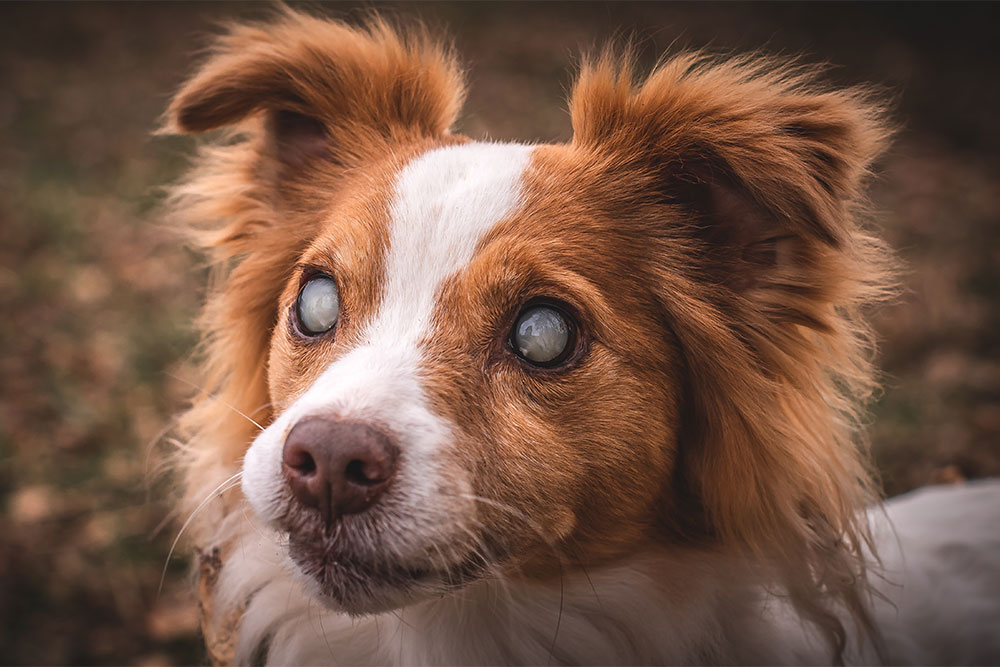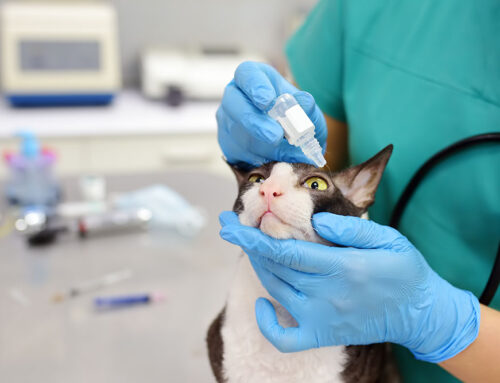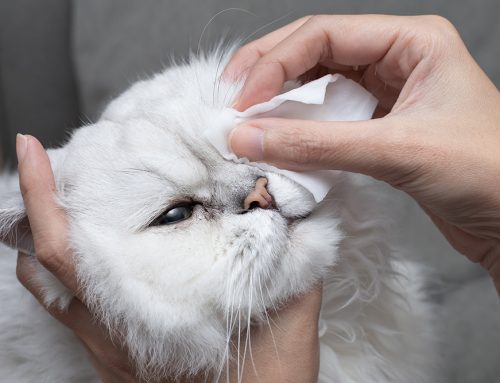When High Blood Pressure Affects the Eyes: What Every Pet Owner Should Know
Has your cat suddenly started bumping into furniture, or is your dog having problems navigating when walking at night? What looks like clumsiness may actually be a sign of something much more serious. High blood pressure can quietly damage the tiny blood vessels in a pet’s eyes, leading to sudden blindness or other vision problems that appear without warning.
Because pets can’t tell us when something feels off, hypertension often goes undetected until it affects their sight. At Veterinary Vision Center in Shreveport, our focus is protecting and preserving vision. Our team frequently diagnoses eye changes caused by high blood pressure and works closely with your family veterinarian to manage this condition and prevent permanent vision loss.
Understanding High Blood Pressure in Pets
The Silent Nature of Hypertension
High blood pressure, or hypertension, occurs when blood flows through the vessels with excessive force. Over time, this damages delicate tissues throughout the body. Pets can’t tell us when they feel dizzy or lightheaded, so the condition often goes unnoticed until it affects vital organs- especially the eyes, kidneys, and heart.
Some of the most common causes of high blood pressure in pets include chronic kidney disease, hyperthyroidism in older cats, diabetes, Cushing’s disease, and pulmonary hypertension in dogs. These disorders increase strain on the cardiovascular system and make blood pressure harder to regulate.
Routine monitoring becomes especially important as pets age or develop any of these conditions. Even seemingly healthy senior pets benefit from preventive testing, which can detect early signs of systemic disease long before symptoms are obvious.
Recognizing Subtle Symptoms
Because hypertension is often “silent,” many pets show no signs until significant damage has occurred. Early detection depends on observing small behavioral changes. You might notice your cat missing jumps, your dog becoming hesitant on walks, or either species appearing disoriented in familiar surroundings.
Vision changes are among the first visible symptoms. Pets may develop dilated pupils that don’t respond to light, bump into furniture, or act fearful in dim rooms. These can be signs of retinal damage caused by high blood pressure.
Physical symptoms such as cloudiness, redness, or discomfort around the eyes also warrant immediate attention. Pets experiencing signs of eye pain may paw at their face, squint, or shy away from bright light.
How Hypertension Damages Vision
Why the Eyes Are So Vulnerable
The eyes contain an intricate network of blood vessels that are easily damaged by elevated blood pressure. When hypertension persists, these vessels can rupture or leak fluid, particularly within the retina- the thin, light-sensitive tissue that sends images to the brain.
If pressure spikes suddenly, the retina may detach entirely, causing sudden blindness. This condition, known as hypertensive retinopathy, is a medical emergency that can lead to permanent vision loss if not treated promptly. However, if caught early enough, some retinas may partially reattach on their own as inflammation subsides and blood pressure is controlled.
Veterinarians use advanced imaging and diagnostic testing for acute blindness to determine whether vision loss stems from hypertension or another cause. Early intervention gives the best chance of preserving sight.
Species Differences and Warning Signs
Cats and dogs can both suffer from hypertensive eye disease, though it often appears differently. Cats may lose vision suddenly from complete retinal detachment, while dogs typically experience a more gradual decline.
Retinal detachment in cats or dogs represents a true emergency. During an eye exam, the detached retina may appear as a gray, billowing layer instead of the smooth, pink tissue seen in healthy eyes.
In rare cases, retinal reattachment surgery has been explored to restore vision, but it is not typically an option for most pets. Medical management focused on controlling blood pressure offers the best outcomes for long-term comfort and stability.
If your pet seems disoriented, hesitant to move, or suddenly unable to see, urgent evaluation can mean the difference between restored sight and permanent blindness.
Prevention and Ongoing Care
Regular Check-Ups Save Vision
Preventing damage from hypertension begins with regular veterinary care. Blood pressure checks should be part of every senior pet’s wellness exam, and they are especially important for animals with kidney, heart, or endocrine disorders.
Unlike human check-ups, measuring a pet’s blood pressure requires calm handling and specialized equipment. Multiple readings are often taken to account for stress-related spikes, ensuring accurate results.
Routine screening and preventive testing help detect risk factors early. When hypertension is found, your veterinarian can investigate whether it’s primary (standalone) or secondary to another condition. Managing systemic hypertension effectively helps prevent irreversible damage to the eyes, kidneys, and heart.
Treatment Options for Hypertension
Once identified, hypertension is typically manageable with medication and regular monitoring. The goal is to reduce blood pressure gradually and protect sensitive organs from further damage.
In cases linked to other illnesses, like chronic kidney disease or hyperthyroidism, controlling the primary disease often stabilizes blood pressure as well.
For pets with vision loss or eye complications, comprehensive ophthalmic exams and advanced treatment options at Veterinary Vision Center can help preserve or restore sight. Managing hypertension successfully often requires teamwork between your primary veterinarian and a specialist for optimal outcomes.

Supporting a Pet with Hypertension at Home
Caring for a hypertensive pet means keeping daily routines calm, consistent, and structured. Stress can elevate blood pressure, so maintaining familiar surroundings and predictable schedules helps tremendously.
Your veterinarian may recommend dietary changes- especially if kidney or heart disease is involved. Lower-sodium diets and prescription formulas designed to support organ health can make long-term management easier. Follow-up appointments remain essential to ensure medications are working effectively and to adjust dosages as needed.
Pets with controlled hypertension often live full, happy lives. By staying consistent with medication, attending rechecks, and reporting any behavioral or vision changes promptly, you can help your pet remain comfortable and confident.
Protect Your Pet’s Sight and Well-Being
High blood pressure may be silent, but its effects are not. Left unchecked, it can lead to blindness, stroke, or organ damage- but with preventive care and early intervention, these outcomes are often avoidable.
If your pet shows vision changes, seems disoriented, or has been diagnosed with kidney or thyroid disease, schedule a blood pressure evaluation as soon as possible.
At Veterinary Vision Center, we combine advanced diagnostics with compassionate care to safeguard your pet’s sight. Schedule an appointment or contact our team today to learn how regular monitoring can protect your pet’s eyes- and their quality of life- for years to come.







Leave A Comment